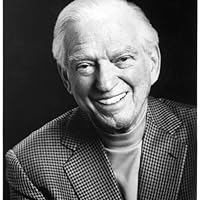Introduction
Sidney Sheldon, a name synonymous with gripping storytelling, intricate plots, and global bestsellers, stands as a towering figure in the realm of English literature. From his early career in television and theater to his later prolific and immensely successful writing career, Sheldon’s contributions have left an indelible mark on literature. This comprehensive exploration delves into Sidney Sheldon’s life, his evolution as a storyteller, and his enduring role in shaping the landscape of English literature.
Section 1: The Early Life of Sidney Sheldon
1.1 Childhood and Education
Sidney Sheldon was born on February 11, 1917, in Chicago, Illinois. Raised during the Great Depression, his early years were marked by financial struggles. Despite facing adversity, Sheldon displayed a keen interest in writing and the arts from a young age. His education at the University of Illinois and later at Northwestern University laid the groundwork for his future endeavors in literature and entertainment.
Section 2: Sheldon’s Career in Theater and Television
2.1 Rise in Hollywood
Sheldon’s foray into the entertainment industry began with his success as a prolific screenwriter in Hollywood during the Golden Age of cinema. His talent for crafting engaging narratives earned him acclaim and opened doors to a successful career in television. Notable contributions include his work on projects like “The Bachelor and the Bobby-Soxer” (1947) and the iconic film “Easter Parade” (1948).
2.2 Broadway Success
Beyond Hollywood, Sheldon achieved success on Broadway with his critically acclaimed plays, including “The Merry Widow” (1942) and “Alice in Arms” (1945). His versatility as a writer was evident in his ability to seamlessly transition between different mediums.
Section 3: Literary Emergence and Novels
3.1 The Literary Transition
While Sheldon’s early career was primarily focused on screenwriting and theater, his transition to the world of novels marked a significant turning point. In 1969, at the age of 52, Sheldon published his first novel, “The Naked Face,” signaling the beginning of a prolific and transformative literary journey.
3.2 The Bestselling Novels
Sheldon’s novels are characterized by suspenseful plots, complex characters, and a narrative style that captivates readers. Some of his most renowned works include “Master of the Game” (1982), “If Tomorrow Comes” (1985), and “The Other Side of Midnight” (1973), each contributing to his status as a bestselling author.
Section 4: Sidney Sheldon’s Signature Style
4.1 Page-Turning Suspense
One of Sheldon’s most remarkable qualities as a novelist was his ability to create page-turning suspense. His intricate plots were filled with unexpected twists and turns, keeping readers on the edge of their seats. This signature style contributed significantly to his popularity among a diverse global readership.
4.2 Multifaceted Characters
Sheldon’s characters were multifaceted and often faced complex moral dilemmas. Whether it was the ambitious Tracy Whitney or the enigmatic Kate Browning, his characters were deeply human, grappling with desires, challenges, and the intricacies of their own psyches.
Section 5: Awards and Recognition
5.1 Literary Accolades
Sidney Sheldon’s impact on English literature was acknowledged through numerous awards and accolades. His achievements include winning an Academy Award for Best Original Screenplay for “The Bachelor and the Bobby-Soxer” and a Tony Award for his Broadway musical “Redhead” (1959). His novels consistently topped bestseller lists, a testament to his widespread acclaim.
Section 6: Television Legacy
6.1 Small Screen Triumphs
Even as Sheldon conquered the literary world, his influence on television endured. He created and produced hit television shows like “The Patty Duke Show” and “I Dream of Jeannie.” His knack for storytelling seamlessly translated to the small screen, captivating audiences across generations.
Section 7: Sheldon’s Impact on Popular Culture
7.1 Global Readership
Sidney Sheldon’s novels have been translated into dozens of languages, contributing to his status as one of the most widely read authors globally. His impact on popular culture is evident in the enduring popularity of his works, which continue to captivate new generations of readers.
7.2 Screen Adaptations
Several of Sheldon’s novels have been adapted into successful television miniseries and feature films. These adaptations have further solidified his legacy, ensuring that his stories remain a part of visual storytelling in addition to literature.
Section 8: Legacy and Influence
8.1 Pioneering Female Protagonists
One of Sheldon’s notable contributions was his creation of strong and independent female protagonists, challenging traditional gender roles in literature. Characters like Tracy Whitney and Kate Browning became symbols of empowerment, inspiring readers and writers alike.
8.2 Genre Evolution
Sheldon’s impact on the thriller and suspense genres cannot be overstated. His ability to blend suspense with elements of romance, drama, and intrigue redefined the genre, influencing subsequent generations of writers and readers.
Section 9: Sidney Sheldon’s Later Years and Passing
9.1 Continued Success
Even in his later years, Sheldon maintained a prolific writing career, producing bestsellers such as “The Sands of Time” (1988) and “The Doomsday Conspiracy” (1991). His ability to consistently deliver compelling narratives showcased his enduring passion for storytelling.
9.2 Legacy and Passing
Sidney Sheldon passed away on January 30, 2007, leaving behind a literary legacy that continues to thrive. His impact on English literature remains profound, with his novels continuing to enthrall readers around the world.
Section 10: Conclusion
Sidney Sheldon’s multifaceted career, spanning theater, television, and literature, cements his status as a literary maestro. His storytelling prowess, characterized by suspense, intricate plots, and memorable characters, has left an indomitable mark on English literature. As readers continue to be enthralled by his works, Sidney Sheldon’s legacy endures as an inspiration for aspiring writers and a testament to the timeless power of storytelling.
